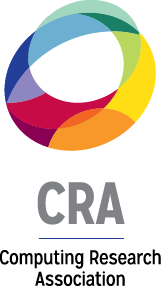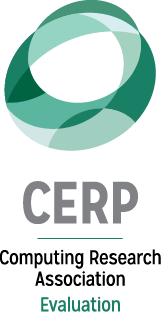President Will Sign COMPETES Act, Will Be Law Tomorrow!
It’s done! It’s done! By now, I expect that everyone has heard that both the House and Senate have agreed on the conference report for H.R. 2272, The America COMPETES Act and that the measure is headed to the President for his signature.
Word comes from the White House today that the President will sign the bill in a small signing-ceremony tomorrow with the Members of Congress who were instrumental in moving the bill along. While it’s a bit of a bummer that the President isn’t making a big “to-do” about this with representatives from industry and academia and lots of press — it does, after all, enact many portions of his own American Competitiveness Initiative, and it’s also an issue that polls really well, a fact you’d think would be important to both a Congress and a President who could use a few good examples of positive, bi-partisan legislation to show off — the important thing is it’s getting signed. After nearly two years of wrangling over this particular set of proposals — and a lot longer than that to get the Administration and the Congress to understand the import of the problems addressed — the President will sign the bill and its provisions will be law.
That deserves some kudos, back-patting, and maybe one or two loud “whoo-hoo’s.”
Especially because this bill has a lot of good things in it. As Cameron Wilson points out over on the USACM Technology Policy Blog, the bill takes two basic routes to fostering the innovation the country will require to stay competitive in an increasingly global world. It addresses federal support for research — both authorizing large amounts of new funding for three key science agencies (National Science Foundation, NIST, and the Department of Energy’s Office of Science), setting a target to double the agencies budgets over 7 years, and by creating a new high-risk research agency at the Department of Energy (called the Advanced Research Projects Agency – Energy, or ARPA-E, in a nod to the DARPA-like character Congress hopes the agency will adopt). And the bill addresses a diversity of Science, Technology, Engineering and Mathematics (STEM) Education efforts. For these, I’ll simply steal what Cameron has already written:
The bill authorizes $43.3 billion over the next three fiscal years for STEM education programs across the federal government. The variety is impressive ranging from new k-12 teacher programs to new opportunities for undergraduate and graduate STEM students. Here is a sampling of the proposals:
- Expands the Robert Noyce program which links students in STEM fields up with education degrees so they can teach STEM in K-12;
- Authorizes two new competitive grant programs that will enable partnerships to implement courses of study in mathematics, science, engineering, technology or critical foreign languages in ways that lead to a baccalaureate degree with concurrent teacher certification;
- Authorizes competitive grants to increase the number of teachers serving high-need schools and expand access to AP and IB classes and to increase the number of qualified AP and IB teachers in high-need schools; and,
- Expands early career grant programs and provides additional support for outstanding young investigators at both NSF and DOE.
In addition, the legislation has several provisions that expand outreach to women and minorities in STEM fields. The lack of females and minorities has been a key problem in computing, so this is another welcome effort.
In addition, the bill contains two particular provisions I wanted to highlight because they’re of particular interest to the computing community:
The first is Section 7024, “High-performance Computing and Networking” (if you’re following along at home (pdf)) — the inclusion of the High-Performance Computing Research and Development Act that has been much discussed on these pages since some of the earliest days of this blog. The bill has been proposed in various forms in every session of Congress since the 106th (we’re now in the 110th) and has never gained the full approval of the Congress — almost always for reasons unrelated to the bill. The bill has, in sessions past, been approved by the House only to languish in the Senate due to jurisdictional fights over other bills, approved by the House Science committee only to run afoul of budget disputes with the GOP Leadership, and been held hostage over fights about NASA between the House and Senate. In fact, until the approval of the conference report last week, it was assumed that this version HPC R&D Act might meet a similar fate as word escaped that some of the Senate conferees thought its inclusion might cause some jurisdictional friction between two Senate committees (Energy and Commerce, who both claim HPC jurisdiction). But those problems were resolved, and the bill includes the full House-approved language, plus an extra section that authorizes efforts in “Advanced Information and Communications Technology Research” at NSF, including research on:
- affordable broadband access, including wireless technologies;
- network security and reliability;
- communications interoperability;,
- networking protocols and architectures, including resilience to outages or attacks;
- trusted software;
- privacy;
- nanoelectronics for communications applicaitons;
- low-power communications electronics;
- implementation of equitable access to natinoal advanced fiber optic research and educational networks in noncontiguous States; and
- other areas the Director [of NSF] finds appropriate.
The provision also allows NSF to fund multiyear, multidisciplinary “Centers for Communications Research” to “generate innovative approaches to problems in information and communications technology research.”
Otherwise, the HPC R&D Act remains essentially unchanged, which means it includes two provisions we particularly like: it requires the White House Office of Science and Technology Policy to develop and maintain a research, development, and deployment roadmap for the provision of federal high-performance computing systems; and there’s now an explicit requirement that the President’s advisory committee for IT (now PCAST) review not only the goals of the federal Networking and Information Technology Research and Development program, but the funding levels as well and report the results of that review to Congress every two years.
The second noteworthy provision in the COMPETES bill is one (Sec. 7012) that was originally included in the House-passed NSF Authorization Act of 2007 (H.R. 1867), that should help clarify NSF’s role in supporting efforts that seek to encourage the participation of women and underrepresented groups in computing, science, technology, engineering and mathematics. As we noted back in March, this is a response to long-standing concerns from CRA and other members of the computing and science communities about NSF’s role. Basically, NSF’s general policy is to only support efforts that represent novel approaches. Yet, what’s often needed in these cases isn’t a novel approach, just a sustained one. The House Science and Technology Committee agreed and included language in the NSF Authorization that addresses the issue by allowing the Director of NSF to review such programs one year before their grants expire and issue extensions of up to three years without recompetition to those efforts that appear to be successful at meeting their stated goals. It also emphasizes that the committee believes this sort of effort — maintaining the strength and vitality of the U.S. science and engineering workforce — is appropriately part of the agency’s mission. So, we’re thrilled that the provision survived the conference and will become law with the President’s signature tomorrow.
This is, of course, not the end of innovation efforts in the Congress or the Administration. While this bill sets nice, juicy funding targets for NSF, NIST and DOE Office of Science, it doesn’t actually appropriate a single dime, so the focus will continue to be on House and Senate appropriators as they wind their way through the appropriations process later this year. We’re still expecting a meltdown in that process, so nothing is guaranteed, despite all the supportive words from Congress and the President. And there will be further efforts to address some of the pieces of the various innovation agendas that aren’t represented in H.R. 2272 — like a permanent extension of the R&D tax credit.
But for now, I think it’s probably appropriate to take a deep breath and savor this win for a day or two. This is a big victory for the science community and a long-time coming for those of us who have been working these issues around the Hill over the better part of the last decade. We commend the President and the Congress for having the vision and the commitment to push ahead on these issues, even when it didn’t seem as politically popular as it is today. And we commend the members of the science community for speaking up on these issues, serving on the advisory committees, and partipating in the grassroots efforts to make Congress aware of the issues. Now, just make sure you go out and do world-leading science — take risks, think audaciously…demonstrate as you’ve done so well in the past why America needs to continue to be an incubator for invention, discovery, and innovation.
And keep it tuned here for all the details… 🙂
Update: (8/9/07) — It’s official!: 
President George W. Bush signs H.R. 2272, The America Competes Act, Thursday, Aug. 9, 2007, in the Oval Office. Pictured with the President are, from left: Director John Marburger of the Office of Science and Technology Policy; Senator Jeff Bingaman of N.M.; Congressman Bart Gordon of Tenn.; and Senator Pete Domenici of N.M. White House photo by Chris Greenberg
Update2: (8/10/07) — Here are the President’s comments about the bill and ACI, as well as an OSTP-produced fact sheet.








